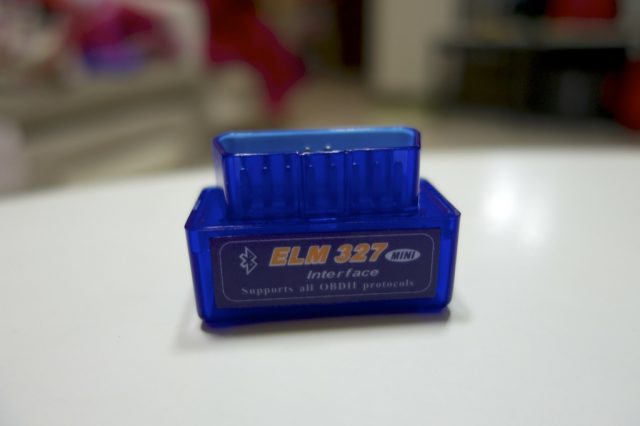 If you own or drive a car, you probably know that modern vehicles are mostly controlled by computers in one way or other. One of the most basic computer is the Engine Control Unit, or ECU, which manages the performance of the engine. Now, if there’s a computer in there, why isn’t there some sort of computer interface on the dashboard?
If you own or drive a car, you probably know that modern vehicles are mostly controlled by computers in one way or other. One of the most basic computer is the Engine Control Unit, or ECU, which manages the performance of the engine. Now, if there’s a computer in there, why isn’t there some sort of computer interface on the dashboard?
Most cars still have a very rudimentary instrument panel showing just the most basic parameters. You could be forgiven for thinking that your car isn’t all that smart after all. However, there’s really much more to it that is ordinarily hidden from the lay person.
One of the manifestation of the ECU’s smartness is in the Check Engine Light (CEL). This is the yellow engine icon in the bottom left of the photo above. It lights up to signal that the ECU has detected an engine problem. Now, you might think that’s not very smart at all. Well, there’s more to it.
When you send it to a workshop, such as the authorised repair workshop or some place equipped with the right tools, they can hook up a computer to a port in the car. This is called the On Board Diagnostics (OBD) port, and is usually located under the dashboard on the driver’s side. Using the OBD connection to the ECU, the mechanic can find out the exact fault that the ECU has detected. It is a very quick and easy way to diagnose engine trouble.
This happened to my car not too long ago. My Check Engine Light came on. The car was still drivable, though at times it seems the engine power had been severely capped. I took it to a workshop. The ECU had reported a “Cylinder 3 Random Misfire” fault. Cool. That was fast. The mechanic went straight to the engine, removed the spark plug from cylinder 3, found that the spark plug seemed a little worn out, and suggested to replace all the spark plugs. A couple of minutes later, spark plugs were replaced, and everything returned to normal.
It was a rather uncanny coincidence that, just a day or two before the Check Engine Light came on, I was checking out a bluetooth OBD dongle online. This dongle plugs into the car’s OBD port, then communicates over bluetooth to an Android or iOS smartphone, and using an app on the smartphone, one can access the ECU just like those computerised tools used in the workshops.
Autobacs charges S$80 just to read the diagnostics from the ECU. Shell Autoserv charges S$35 to do the same. The dongle costs just US$8.
That’s the bluetooth OBD dongle pictured above. It supports the OBD-II standard, which is an improvement over the original OBD-I in both capability and standardisation. The OBD-II standard is quite prevalent, and it is supported by many makes and models of cars.
With this OBD-II dongle, you can access Diagnostic Trouble Codes (DTC) from the ECU. If your Check Engine Light comes on, the DTC will explain the fault. Apart from DTC codes, you can also read plenty of real-time information, such as: engine RPM, coolant temperature, vehicle speed, absolute throttle position, fuel pressure, air flow rate, vacuum pressure, intake air temperature, and plenty more.
The OBD dongle is all nice and dandy, but of course, don’t forget you’ll need software to work with it. The dongle above does come with some software on the CDROM included in the package. I did not check them out yet. Instead, I went to the Google Play Store to explore the various OBD-II apps available.
Torque seems to come highly recommended, so I decided to go for it. There’s a free version, and there’s also a “pro” version that costs S$6.07.
 The above screenshots are from the Torque “pro” app. The left screenshot is of the main screen, while the other is the Realtime Information screen. The Realtime Information screen has many pages, each one customisable with any layout of dials, gauges, widgets and other bits of information of your choosing.
The above screenshots are from the Torque “pro” app. The left screenshot is of the main screen, while the other is the Realtime Information screen. The Realtime Information screen has many pages, each one customisable with any layout of dials, gauges, widgets and other bits of information of your choosing.
The Torque app also lets you graph data, and record your travel routes. You’ll be pretty much amazed, or at least I was, with the amount of data available from the ECU. Suddenly, our simple car has become as complicated as an airplane.
The OBD is the KVM (keyboard, video and mouse) of the ECU. It’s an essential tool if you want to know more about what’s happening with your car, under the hood!

Cool! Where to get the dongle?
This is from AliExpress: http://www.aliexpress.com/item/Latest-Version-V2-1-Super-Mini-ELM327-Bluetooth-OBD2-Scanner-ELM-327-Bluetooth-For-Multi-brands/808159089.html
Great! I think I should first check where the OBD port is in my car, to make sure it is compatible with this dongle.
Great! I think I should first check where the OBD port is in my car, to make sure it is compatible with this dongle.